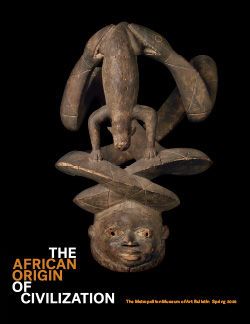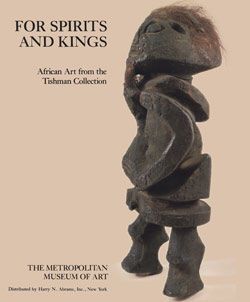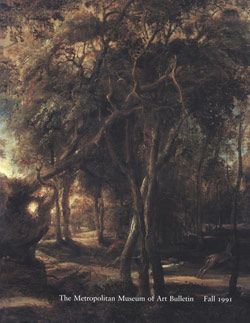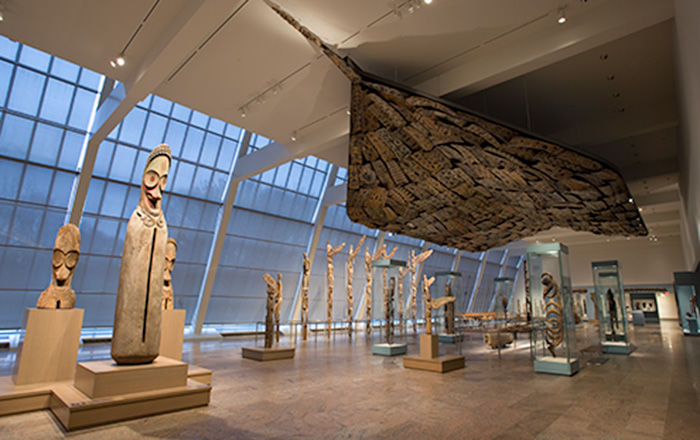Gẹ̀lẹ̀dẹ́ helmet mask
Gẹ̀lẹ̀dẹ́ is danced by men to honor and appease the powers of living, ancestral, or deified women who are collectively referred to as àwọn ìyá wa, or "our mothers." Staged in the marketplace, where women are an economic powerhouse, this theatrical genre is believed to have originated in the Ketu region bordering present-day Nigeria and Benin during the eighteenth century. The standardized face at the base is the foundation for a dynamic composition in which the hind legs of a porcupine are devoured by serpents. Animal images act as metaphors for human personalities and interactions. Depictions of snakes seizing other creatures communicate competing social or spiritual powers. Because of their voracious appetites and sluggish movements, porcupines reference gluttony and selfishness. The elegant arrangement of these intertwined creatures imaginatively recasts the decorative flair of a gèlè, the fabric headwrap worn by women that is frequently integrated into gẹ̀lẹ̀dẹ́ costumes.
This image cannot be enlarged, viewed at full screen, or downloaded.




